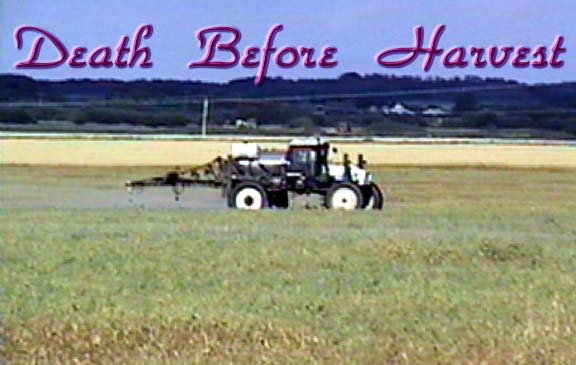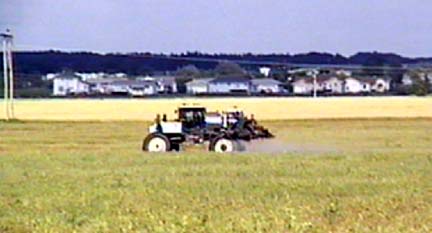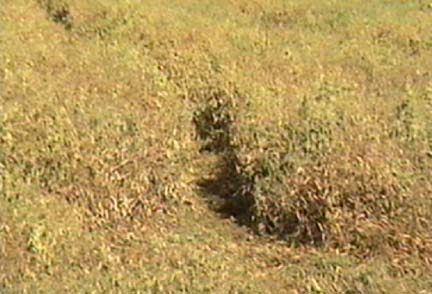

I was astonished the very first time I heard of this practice because it seems like such an odd thing to do. "Spray poison on a crop to kill it!"
Exactly, this process has been used for years with Canola and in the situation here we see a surface sprayer applying a defoliant or desiccant, on the field to end the growth cycle of this crop of field peas.
The chemical kills the crop and allows it to dry out slightly so that the farmer can come into he field and
 swath.
With the use of this
swath.
With the use of thischemical he can move in with his combine and get the job done in one process.
It was interesting to contrast these two chemical applications as they were working side by side Tuesday afternoon. The aerial spraying of the canary seed crop and this operation were both happening in adjacent fields at the same time.
It is easy to see the problem that a modern farmer is faced with. To keep his input costs down and produce the most product per unit of land
 to do the farming
for him, but
to do the farming
for him, butat the same time, this has to be done at a minimum cost.
Aerial spraying is slightly more costly, but when you consider the loss of product in the damage done by the land spraying process, as can be seen in the picture on the right, the farmer has to weigh the field loss against the slightly higher cost of aerial application. Add to this the weather conditions and the pressure of getting that crop to harvest in time, farming has become a very complex business with so many variables and components that conflict with one another in an ever increasing attempt to be efficient and produce the most for the least cost.